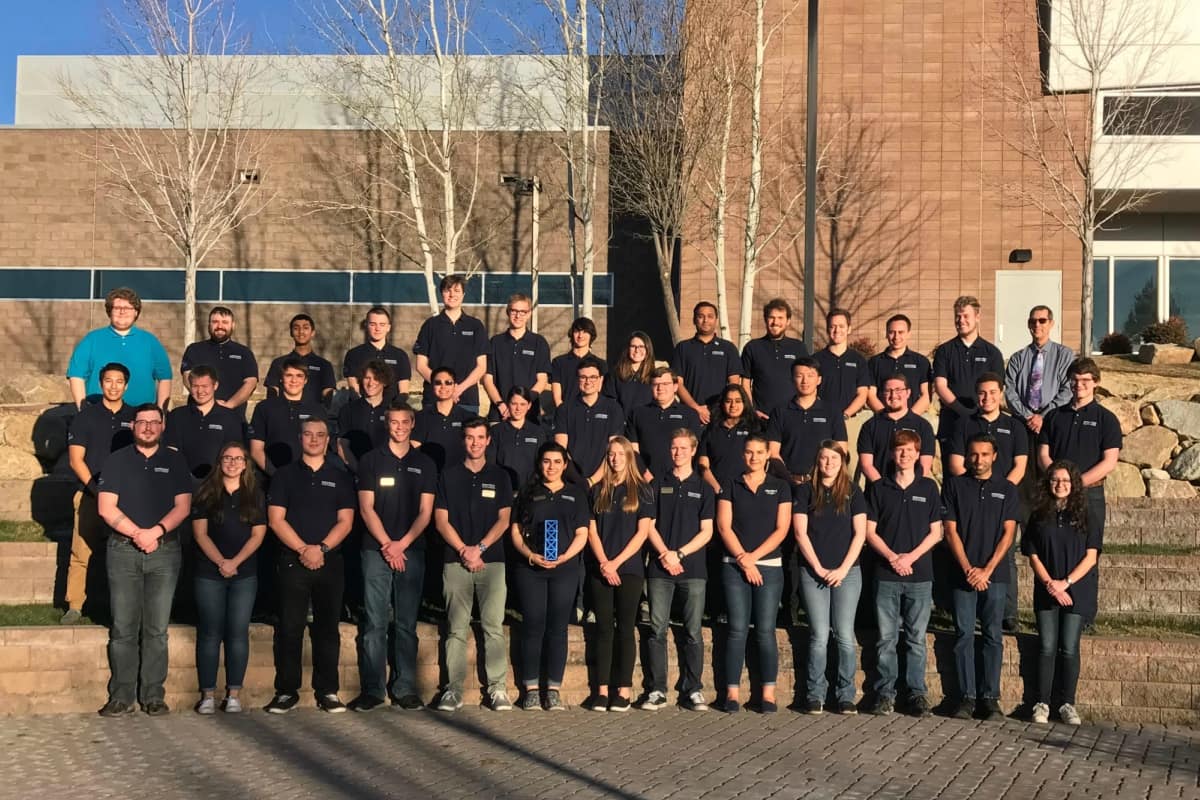Embry-Riddle Prescott Selected by NASA for Future Satellite Launch

Following the successful launch of EagleSat-1 in November 2017, NASA has invited Embry-Riddle Aeronautical University’s Prescott Campus to launch EagleSat-2, another cube satellite (CubeSat) designed, developed, and tested by students in the College of Engineering.
One of only 11 accepted proposals, EagleSat-2 was accepted to participate in NASA’s CubeSat Launch Initiative (CSLI), which is intended to provide viable launch opportunities between 2019 and 2021 for CubeSats as auxiliary payloads on planned NASA, U.S. government, or commercial spaceflight missions or as deployments from the International Space Station.
“We have been designing this spacecraft and its missions for almost three years now,” said student Hilliard Paige, EagleSat-2 project manager. “We are designing for a six-month operational scientific lifetime, but we are hoping for a year.”
EagleSat-2 is being built entirely by Embry-Riddle undergraduate students. Once in space, the CubeSat will conduct two important scientific missions. First, it will observe and catalog various types of cosmic rays, learning about which kind of particles come from certain points in space. Second, it will test various types of computer memory to determine which kind is best suited for space environments. Additionally, EagleSat-2 will have the capability of knowing exactly where it is at any given moment in time, it will know where it is pointing, and it will know how to cool and warm itself up if it gets too hot or cold. It can also adjust its orientation in space without the need for thrusters since it’s all done magnetically.
“It’s inspiring to see students devote so much of their personal time to such a challenging, technical project,” said Dr. Gary Yale, Associate Professor of Aerospace Engineering and faculty mentor. “Students involved in the EagleSat program don’t receive any course credit for their efforts. It’s great to see their hard work and dedication rewarded by their selection to the CSLI program.
While NASA launches the CubeSat, the students handle everything in terms of operating and running the mission from campus. As part of the launch agreement, the team is obligated to share all of their scientific findings and data with NASA.
“Here at Embry-Riddle, we take what we learn in class and then use our own time to design and build a spacecraft that will actually go into space,” added Paige. “This isn’t just for some research paper—this is real and tangible and in line with how NASA designs satellites in the real world.”
EagleSat-2 currently has approximately 50 active members. Follow the team’s progress on Facebook at https://www.facebook.com/eaglesaterau/

 Jason Kadah
Jason Kadah